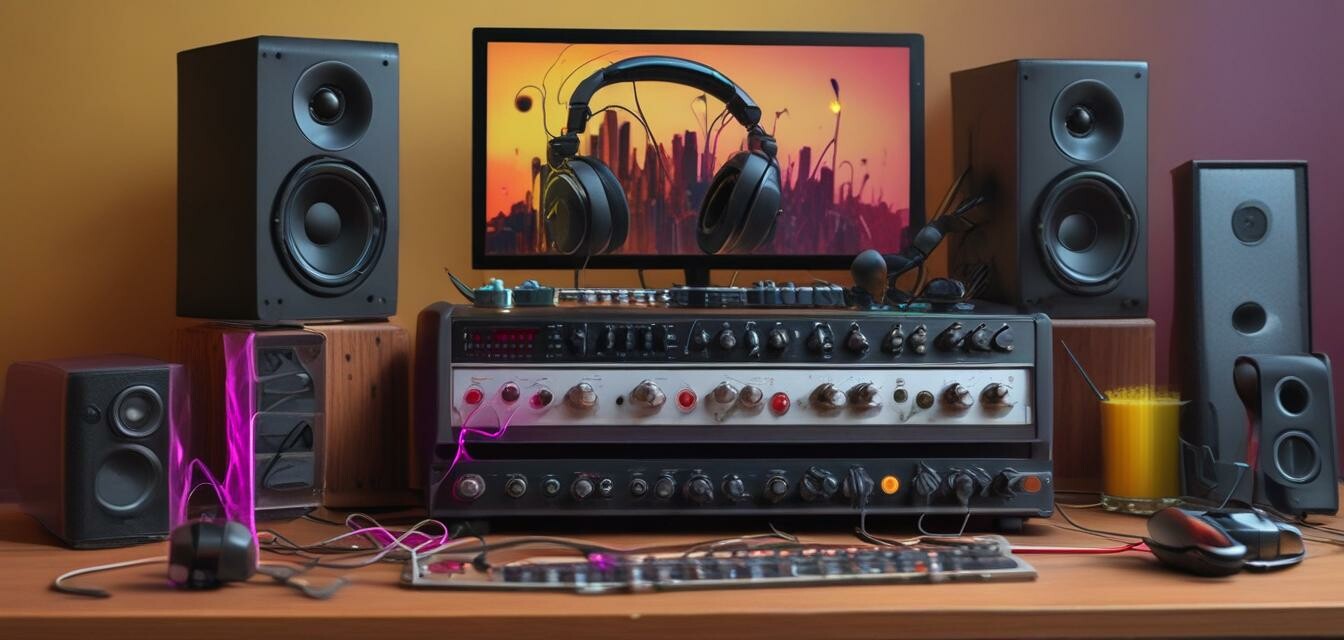
How to Connect Your Audio Devices for Optimal Sound
Key Takeaways
- Understanding the types of audio connections is crucial for optimal sound quality.
- Utilizing proper cables can minimize signal loss and interference.
- Regularly adjusting device settings can enhance your audio experience.
- Properly positioning your speakers plays a vital role in sound quality.
Connecting multiple audio devices efficiently can significantly enhance your listening experience. Whether you're setting up a sound system for home entertainment or connecting headphones to a computer, ensuring optimal sound quality is essential. In this guide, we'll walk you through the steps to connect your audio devices effectively for the best sound experience.
Types of Audio Connections
The first step in connecting your audio devices is to understand the various types of audio connections available. Each type has its advantages and is suited for different setups:
| Connection Type | Description | Use Case |
|---|---|---|
| Analog (RCA) | Classic connection with red and white cables for stereo sound. | Used in older audio equipment and many home theaters. |
| Optical | Digital connection that transfers audio signals as light. | Perfect for modern audio setups, prevents interference. |
| HDMI | Supports high-definition audio and video through a single cable. | Ideal for connecting to TVs and receivers. |
| Bluetooth | Wireless connection for devices without physical ports. | Great for portable devices and casual listening. |
| 3.5mm Jack | Common headphone jack for portable devices. | Widely used for headphones and external speakers. |
Steps to Connect Your Audio Devices
Now that you are familiar with the types of connections, follow these steps to connect your audio devices:
Step 1: Gather Your Equipment
Before starting, ensure you have all necessary equipment, including:
- Your audio devices (speakers, headphones, etc.)
- Cables compatible with your devices
- A power source for powered devices
Step 2: Choose the Right Connection
Select the connection type based on your audio devices. Remember to consult your device manuals if unsure which connection is best.
Step 3: Connect Your Devices
Hook up your devices according to the relationship dictated by your preferred connection. Consult the connection table above for guidance.
Step 4: Adjust Settings
Once connected, adjust the settings on your audio devices for optimal performance. This may include:
- Volume levels
- Equalizer settings
- Balance adjustments
- Spatial sound settings
Step 5: Position Your Speakers
If you're using external speakers, speaker placement is key. Here are some tips:
- Place speakers at ear level when seated.
- Aim to form an equilateral triangle with your listening position.
- Avoid placing speakers in corners to reduce bass buildup.
Troubleshooting Common Issues
Here's how to troubleshoot common audio issues:
- No sound: Check all connections and volume levels.
- Distorted sound: Verify cables are free from damage.
- Interference: Move Bluetooth devices closer or reduce obstacles.
When to Seek Professional Help
If you're unable to resolve your audio issues, consider consulting a professional. Sometimes complex setups require expert advice for optimal performance. Services can often be found in electronics stores or independent audio specialists.
Tips for Beginners
- Start with one type of audio device before expanding your setup.
- Take your time when adjusting settings to find what sounds best for you.
- Educate yourself on basic audio concepts through resources such as our how-to guides.
Pros
- Enhances overall sound experience.
- Provides versatility in setups.
- Allows for personalized audio settings.
Cons
- Can be complicated for beginners.
- May require additional equipment.
- Improper setup can lead to poor sound quality.
Conclusion
Connecting your audio devices for optimal sound requires understanding, patience, and proper setup. Following the steps mentioned in this guide can lead to a superior audio experience, whether you're enjoying music, gaming, or watching movies. Don't hesitate to explore further resources such as our audio gadgets category for more equipment and enhancements!
